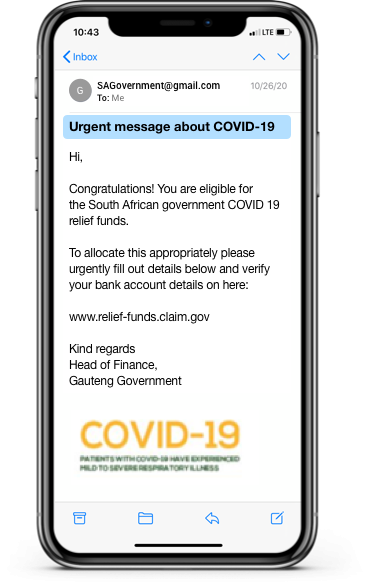
Phishing - when is a message FAKE?
Phishing is when you are contacted out of the blue (without you requesting it) and are requested to provide personal information, participate in some activity, open an attachment or simply just click on a link. This can happen on email, WhatsApp, SMS, Facebook, LinkedIn or even over a phone call. The golden rule is to always think before you respond and never provide personal information including user IDs and passwords.
How to Spot a Fake or Phishing Email
Clicking on an unsafe link is all it takes for criminals to hack into and take over your machine or online accounts. Did you know that many phishing attacks are so successful because they trigger our emotions and thereby suppress our critical thinking?
Just 10 seconds of mindful pausing will reactivate your logical thinking brain – so slow down before reacting to any messages you did not expect and think before you click.
Watch out for fake emails. Remember, the next email you receive could be FAKE.
Below is a FAKE email. Study the FAKE dimensions to learn about the FAKE techniques:

FAKE Dimensions
Feeling:
Does the message trigger an emotional reaction such as curiosity, greed or fear, or does it try to pressurize you?
Action:
Does it ask you to click on a link, open an attachment or provide personal information?
Know:
Do you know the sender? Be careful as hackers often spoof a sender’s email address to make the mail look like it comes from someone you know.
Expect:
Were you expecting this email? Did you sign up for any relief program? Even if you know the sender, their account may have been compromised, so rather verify if you are unsure or if it is related to payments, or your financial or personal information.